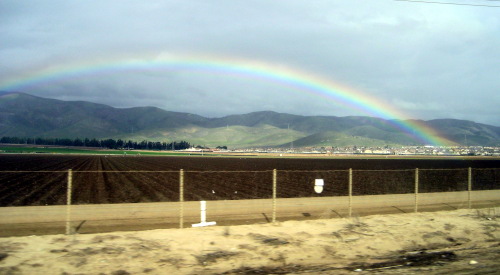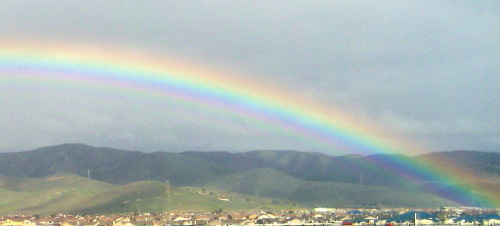While walking to lunch today, I spied a fragment of halo above the sun. (Whenever I notice a really thin layer of cirrus clouds, I always try to find an opportunity to block the sun and look for halos.) I tried to get a couple of shots with my phone, and figured I’d try enhancing them when I got home.
What surprised me is that the halo was not only still there after lunch, but clearer. On the way back, I stopped in several places with a building, or a sign, or a tree blocking the sun. The curve seemed too shallow to be a standard circular halo, so I wondered what I was actually seeing. Then I realized there was a faint halo inside the brighter curve, the two fragments meeting above the sun and splitting like diverging roads.
Then I noticed the sundog.
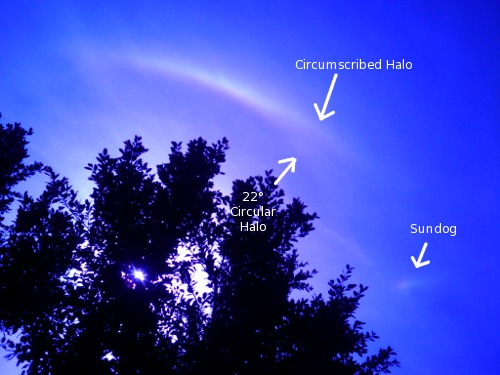
Three distinct sun halos. Not complete, and far from the clearest display I’ve seen, but certainly the most complex.
The brightest part appears to be the top of a circumscribed halo, which varies in shape from oval to kidney-bean depending on how high the sun is. You can just see the 22° circular halo branching off below it. Off to the right is a sundog.
It’s too bad I only had the phone, but it did manage to catch all three halos. I fiddled with the contrast a little to make them clearer, but they are visible without it.
And to think I saw this from the middle of suburban Southern California!
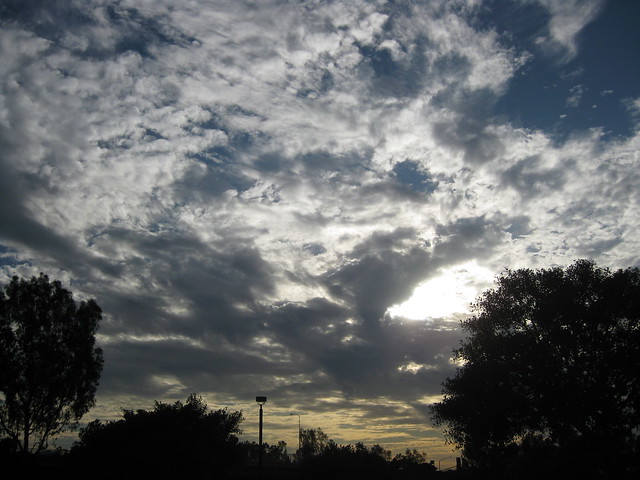
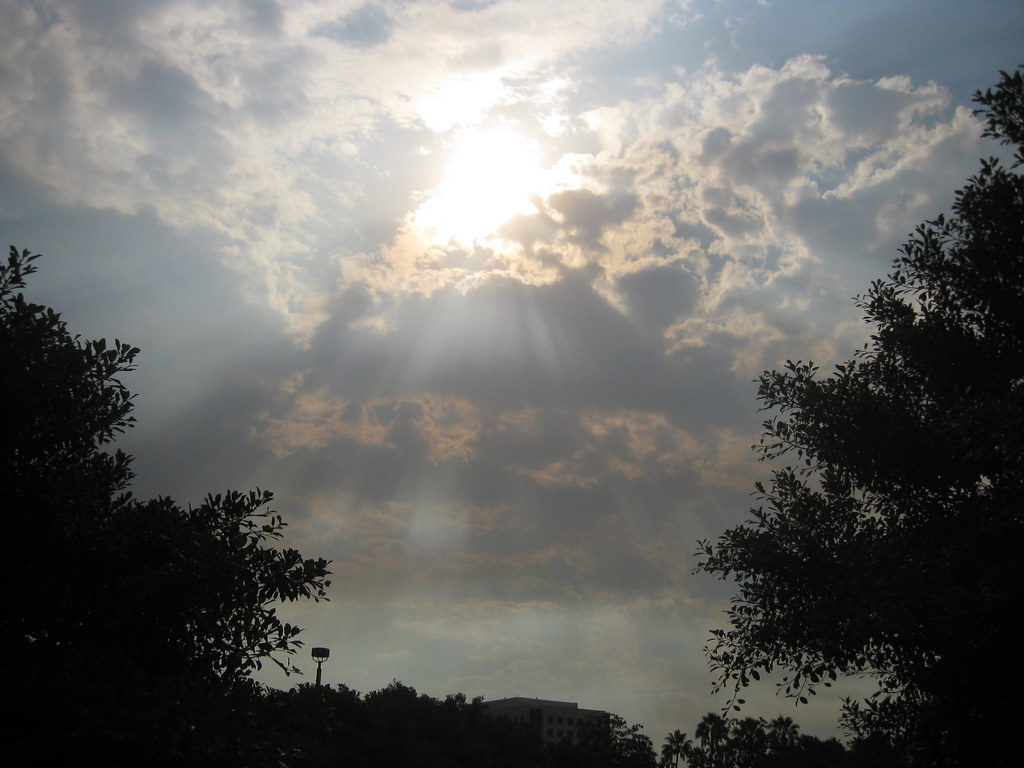
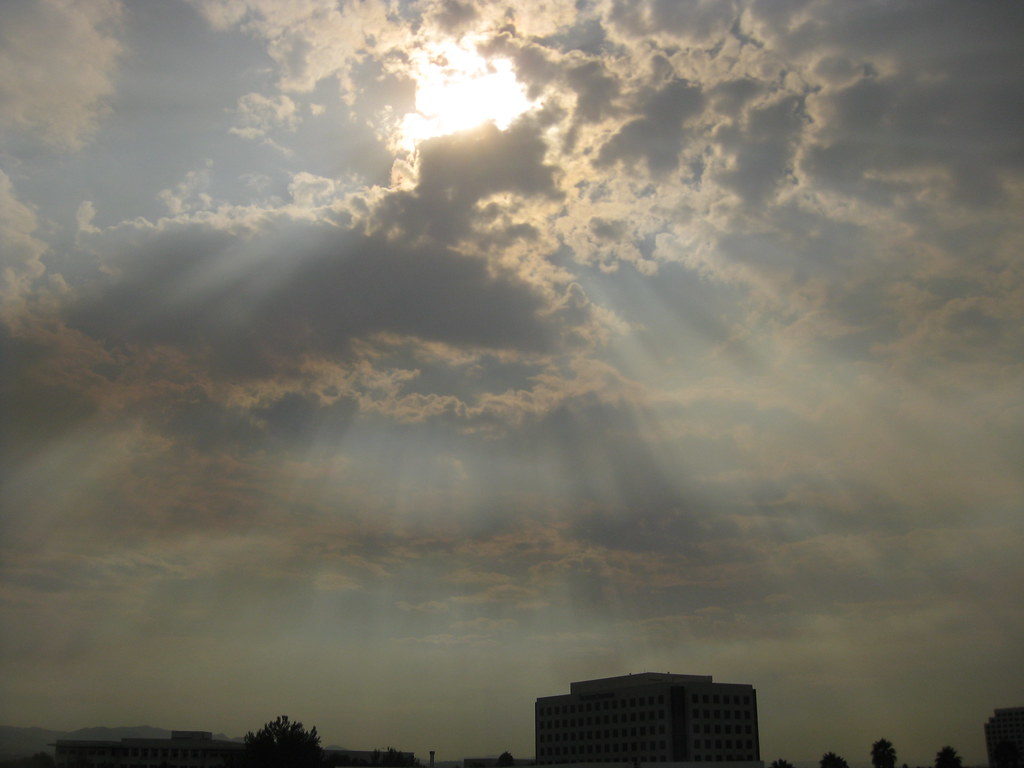
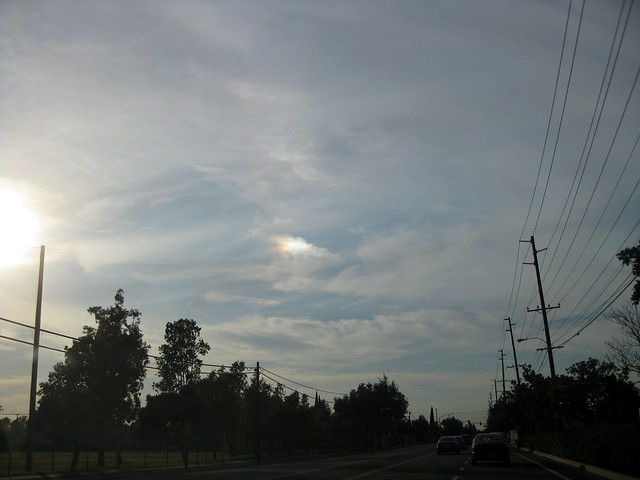
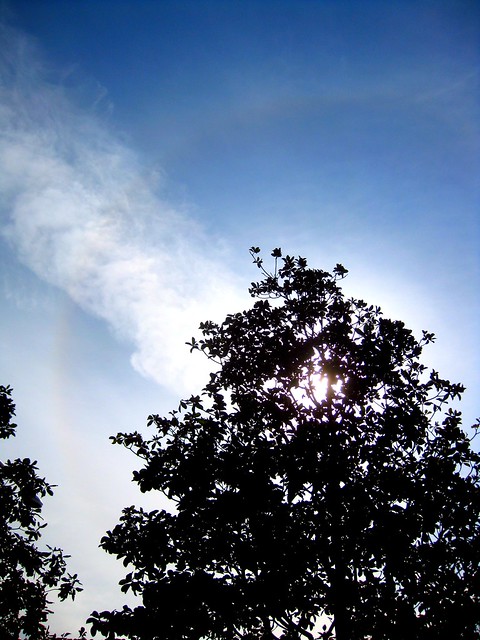
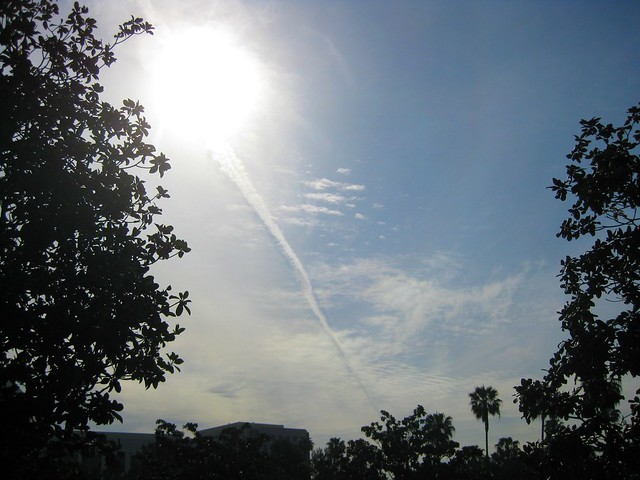
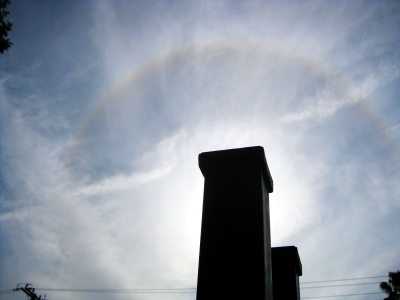
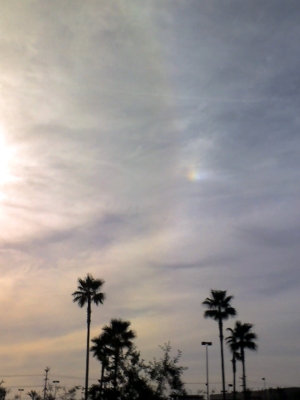
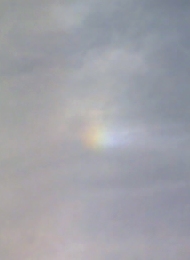
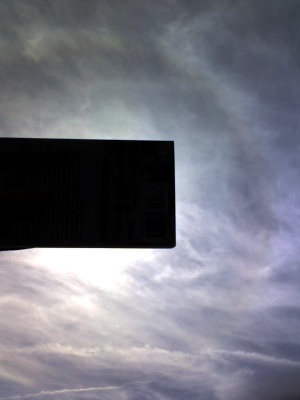 Whenever there’s a light layer of cirrus clouds in the sky, I keep an eye out for halos. I catch the occasional iridescent cloud, or a faint sundog that’s only visible through sunglasses. Today I spotted a
Whenever there’s a light layer of cirrus clouds in the sky, I keep an eye out for halos. I catch the occasional iridescent cloud, or a faint sundog that’s only visible through sunglasses. Today I spotted a 